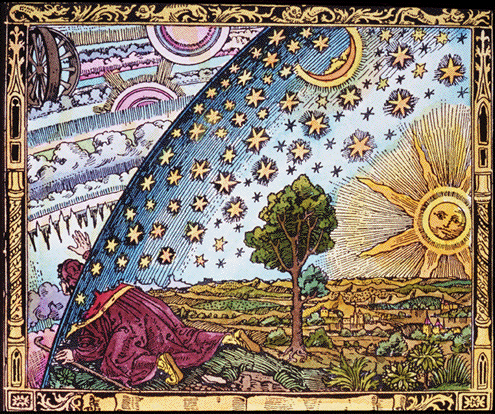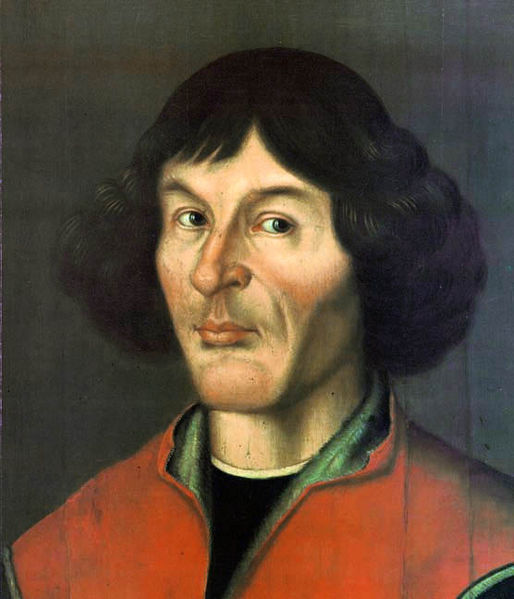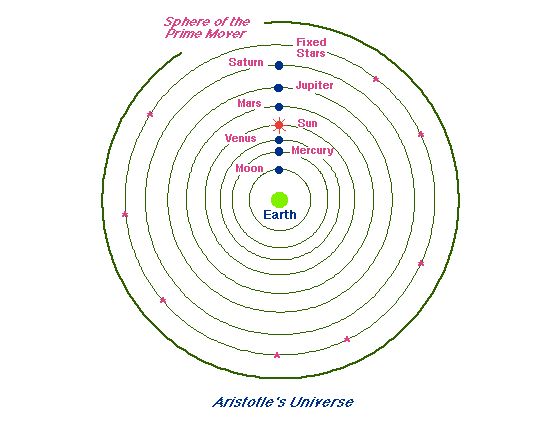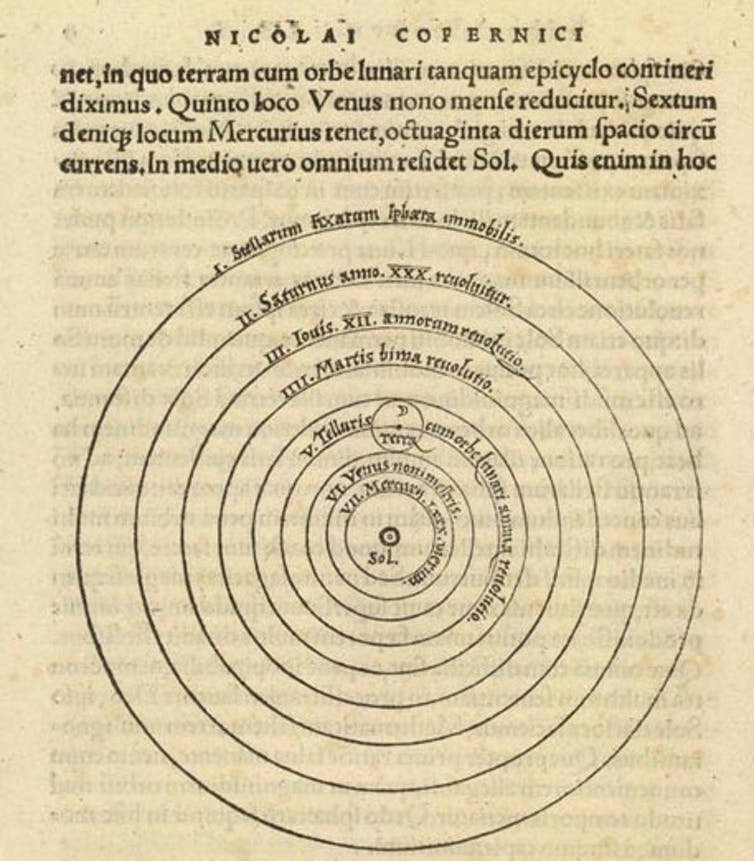
This Flammarion engraving, by an unknown artist, is called Empedocles Breaks through the Crystal Spheres. It first appeared in Camille Flammarion’s 1888 book L’atmosphère: météorologie populaire (The Atmosphere: Popular Meteorology) with the caption: “A missionary of the Middle Ages tells that he had found the point where the sky and the Earth touch …”
February 19, 1473. This is the birthday of Nicolaus Copernicus, a Renaissance astronomer and mathematician who sparked the revolution in cosmology that’s still going on today.
Copernicus was born at a time when people believed Earth lay enclosed within crystal spheres at the center of the universe. Can you picture the leap of imagination required for him to conceive of a sun-centered universe? The publication of Copernicus’ book – De revolutionibus orbium coelestium (On the Revolutions of the Celestial Spheres) – just before his death in 1543, set the stage for all of modern astronomy.
Today, people speak of his work as the Copernican Revolution.

Nicolaus Copernicus via Wikipedia
A few years ago, if you searched on the word “Google” on Copernicus’ birthday, you’d have found an animated version of a Google Doodle celebrating a sun-centered cosmos. Google uses Google Doodles to showcase holidays, famous birthdays and so on. Not sure if they’re using this doodle this year or not. Search and see! Or see the video below, which also features the Copernicus Google Doodle. Thank you to EarthSky Facebook friend Kausor Khan in Hyderabad, India, for pointing it out to us.
By the way, Copernicus wasn’t the first to conceive of a sun-centered universe. Early Greek philosophers also spoke of it.
It was the Greek philosopher Aristotle, however, who proposed that the heavens were literally composed of 55 concentric, crystalline spheres to which the celestial objects were attached. In Aristotle’s model, Earth lay at the center of these spheres.

Earth-centered model of the universe via Aristotle. In the medieval world, people thought Earth lay enclosed within crystal spheres. Read more about Artistotle’s model of the universe here.
Thus Earth lay – fixed and enclosed – until Copernicus published his version of a heliocentric, or sun-centered, universe.
Read more: Copernicus’ revolution and Galileo’s vision, in pictures

This is Copernicus version of a heliocentric – or sun-centered – universe. Image via Library of Congress. Read more.
Bottom line: Nicolaus Copernicus was born on this date, February 19, 1473.
from EarthSky http://ift.tt/1Es7pe2

This Flammarion engraving, by an unknown artist, is called Empedocles Breaks through the Crystal Spheres. It first appeared in Camille Flammarion’s 1888 book L’atmosphère: météorologie populaire (The Atmosphere: Popular Meteorology) with the caption: “A missionary of the Middle Ages tells that he had found the point where the sky and the Earth touch …”
February 19, 1473. This is the birthday of Nicolaus Copernicus, a Renaissance astronomer and mathematician who sparked the revolution in cosmology that’s still going on today.
Copernicus was born at a time when people believed Earth lay enclosed within crystal spheres at the center of the universe. Can you picture the leap of imagination required for him to conceive of a sun-centered universe? The publication of Copernicus’ book – De revolutionibus orbium coelestium (On the Revolutions of the Celestial Spheres) – just before his death in 1543, set the stage for all of modern astronomy.
Today, people speak of his work as the Copernican Revolution.

Nicolaus Copernicus via Wikipedia
A few years ago, if you searched on the word “Google” on Copernicus’ birthday, you’d have found an animated version of a Google Doodle celebrating a sun-centered cosmos. Google uses Google Doodles to showcase holidays, famous birthdays and so on. Not sure if they’re using this doodle this year or not. Search and see! Or see the video below, which also features the Copernicus Google Doodle. Thank you to EarthSky Facebook friend Kausor Khan in Hyderabad, India, for pointing it out to us.
By the way, Copernicus wasn’t the first to conceive of a sun-centered universe. Early Greek philosophers also spoke of it.
It was the Greek philosopher Aristotle, however, who proposed that the heavens were literally composed of 55 concentric, crystalline spheres to which the celestial objects were attached. In Aristotle’s model, Earth lay at the center of these spheres.

Earth-centered model of the universe via Aristotle. In the medieval world, people thought Earth lay enclosed within crystal spheres. Read more about Artistotle’s model of the universe here.
Thus Earth lay – fixed and enclosed – until Copernicus published his version of a heliocentric, or sun-centered, universe.
Read more: Copernicus’ revolution and Galileo’s vision, in pictures

This is Copernicus version of a heliocentric – or sun-centered – universe. Image via Library of Congress. Read more.
Bottom line: Nicolaus Copernicus was born on this date, February 19, 1473.
from EarthSky http://ift.tt/1Es7pe2

Aucun commentaire:
Enregistrer un commentaire